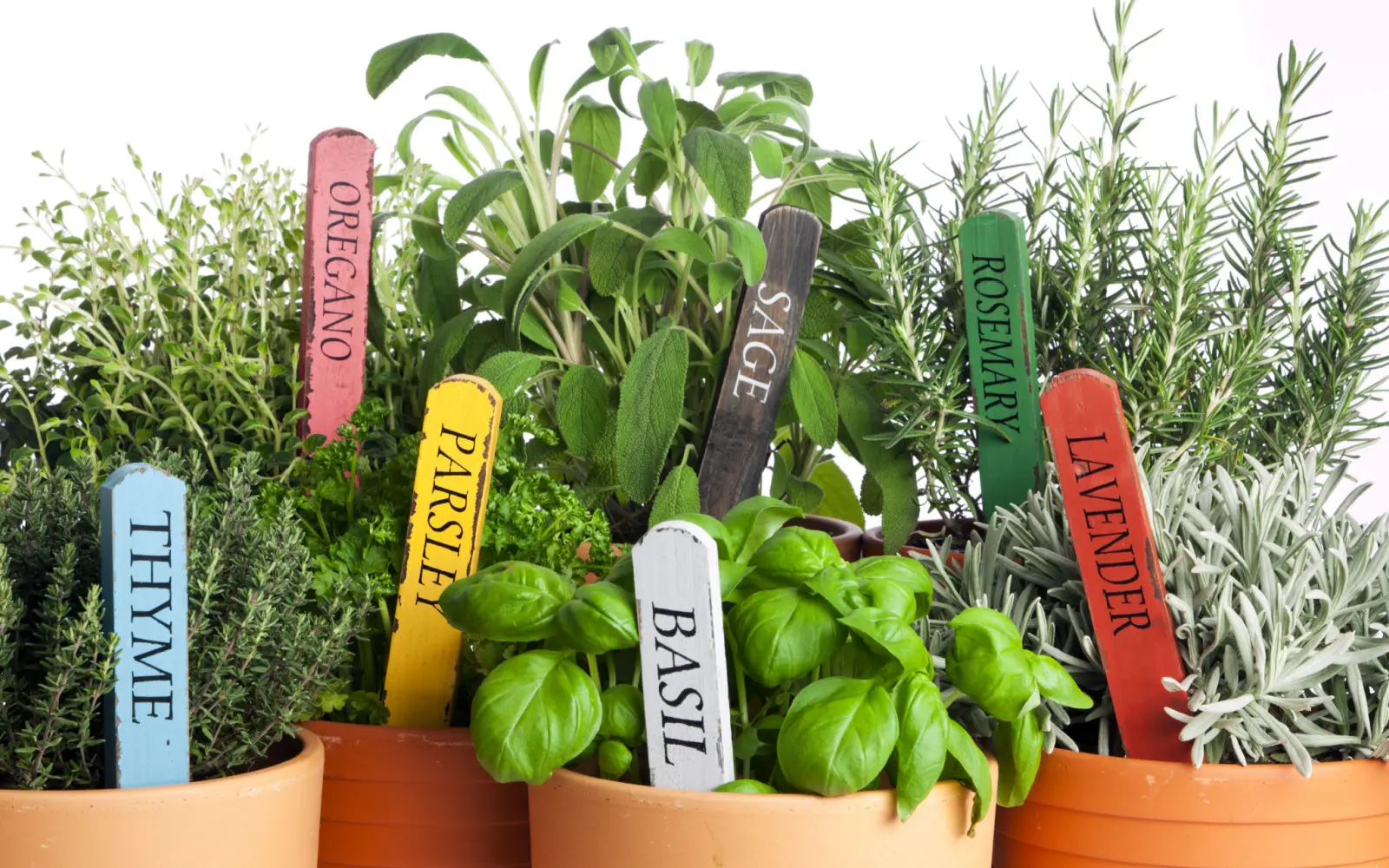If not for the many types of herbs available, food would be much less delicious, and gardens would be less beautiful. Luckily, there are many herbs you can use to make your life better in countless ways.
Herbs consist of a large group of aromatic plants used in cooking, crafts, and medicine.
While many of these leafy greens look similar to the untrained eye, you can detect the differences once you smell or taste them.
26 Types of Herbs for Your Senses to Enjoy
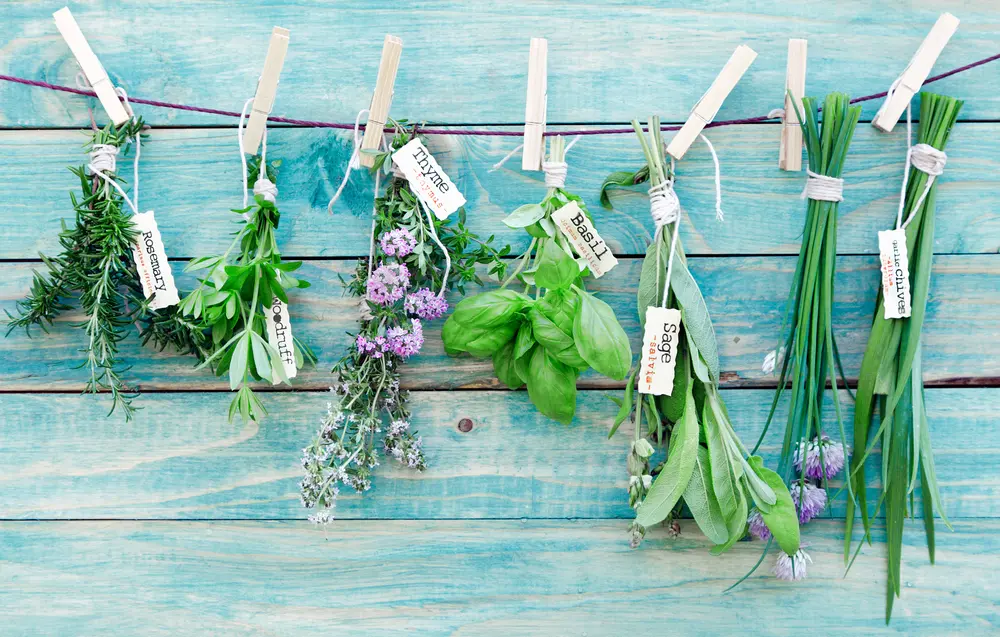
Stockcreations/Shutterstock
Here is our list of the top 26 herbs that you should know and keep on hand in your garden or in your pantry.
1. Angelica
Angelica is a biennial herb that has connections to Scandinavian and Sami cultures. It tastes and smells similar to fennel.
This herb has uses in alcohol and foods, such as candy or omelets. Angelica can grow quite tall, and all parts of the plant have culinary uses.
2. Basil
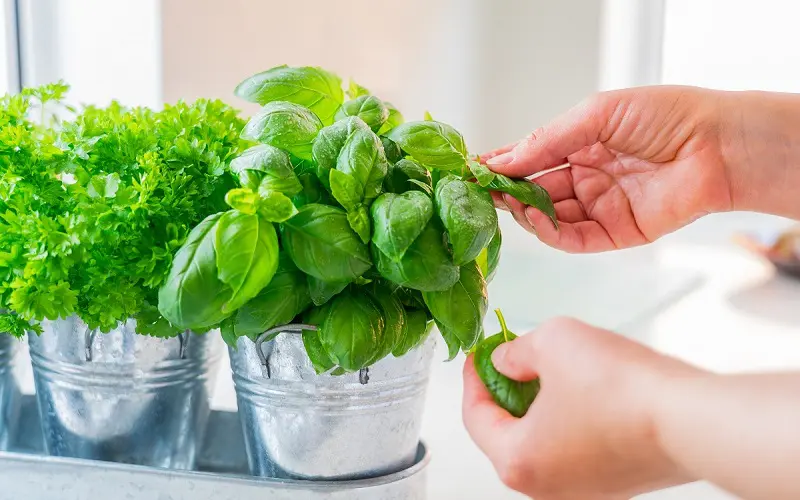
Okrasiuk/Shutterstock
Basil is a collective term used for many plants used in cuisines around the world. Varieties of these plants are in Italian, Thai, and Serbian cuisine.
While basil leaves are the most common part of basil used, the stem, seeds, and flowers also play a role in various dishes. Basil grows as an annual in cold climates and as a perennial in warm climates.
3. Bay Leaf
Bay leaf is a dried leaf drawn from bay laurel or similar plants. It imparts a floral and savory flavor to stews and other dishes.
Remove the leaves before eating the dish because they can be difficult to eat. These leaves are also useful as insect repellants.
4. Borage
Borage is an herb with blue flowers native to the Mediterranean. It is typically grown as an annual and is self-seeding. Flowers, leaves, and seeds all serve either culinary or medicinal uses.
For example, the flowers, which taste like honey, are used in desserts, while the greens play a role in soups, pasta, and pickling.
5. Chives
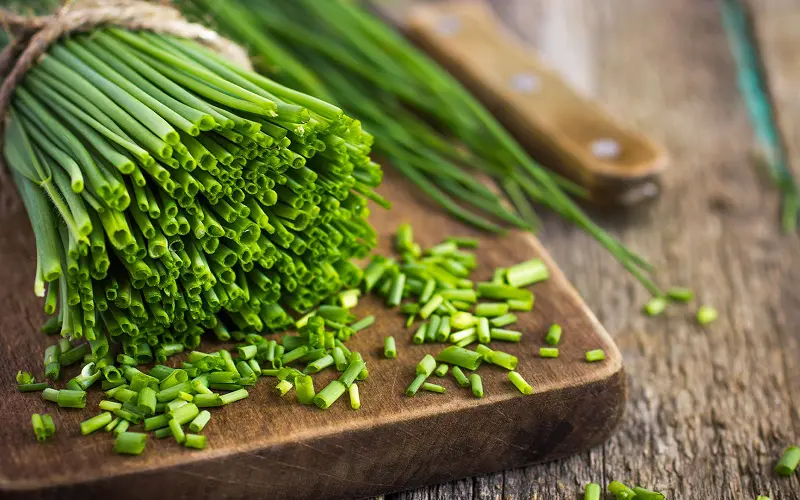
Anna Shepulova/Shutterstock
Closely related to onions, garlic, shallots, and leeks, chives share the same aromatic flavor. Both leaves and flowers have culinary uses across many cultures.
These plants grow across North America, Asia, and Europe. Besides being useful in dishes of all kinds, this allium is also great at deterring pests in the garden.
6. Cilantro
Cilantro is an annual herb whose seeds are known as coriander. Those seeds play a role in many cuisines, including Asian, North American, South African, and German cultures.
The frilly leaves taste somewhat citrusy. They work well in salsa, guacamole, chutneys, salads, soups, and meat.
7. Cress
Cress is a spicy herb related closely to watercress and mustard. This annual plant can grow quickly and robustly.
You can eat it raw to get the full nutritional impact of this herb. Cress provides a peppery and bright flavor that pairs nicely with salads, sandwiches, and soups.
8. Curry Leaf
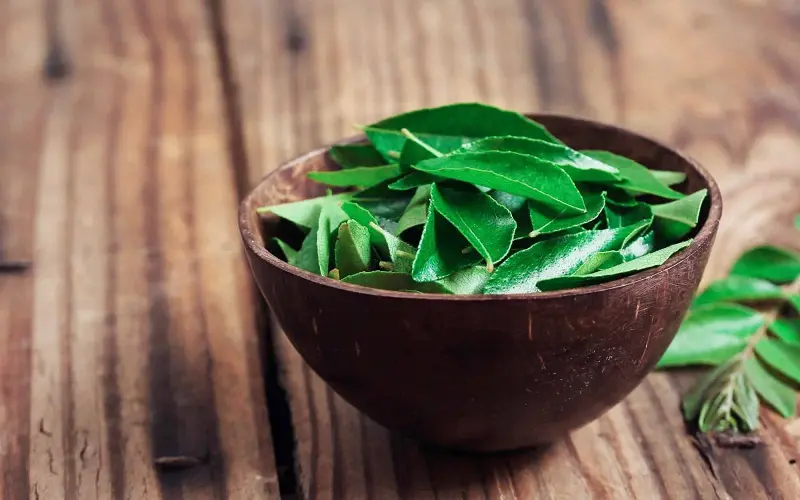
vm2002/Shutterstock
Native to Asia, the curry tree produces leaves for many Indian dishes. While the leaves themselves are fried and used as an herb in many dishes, a dried and ground form is also a popular spice. Avoid the seeds of this herb since they are toxic to humans.
9. Dill
Dill is an annual herb related to celery. Both the leaves and seeds play a role in European and Asian cuisines. In addition, it is popular in Baltic and Scandinavian cuisines.
This herb is a popular addition to fish, soup, pickling, and potatoes. Besides its culinary uses, dill is also useful in pollinator-friendly gardens.
10. Epazote
Epazote is an annual and occasional perennial native to Central America and South America. It tastes similar to oregano, fennel, or mint.
Besides its uses as an herb, this plant is also popular as a vegetable and a tea. Besides its culinary uses, epazote is a good companion plant thanks to its ability to drive away insects.
11. Hyssop
Hyssop, a relative of mint, is a common herb used for medicinal purposes. The plant is quite hardy and does well in difficult soils and warm areas.
Besides its ability to suppress coughs and serve other medicinal purposes, hyssop also makes vital contributions to Middle Eastern cuisine. Za’atar spice mixes commonly contain dried hyssop leaves.
12. Lavender
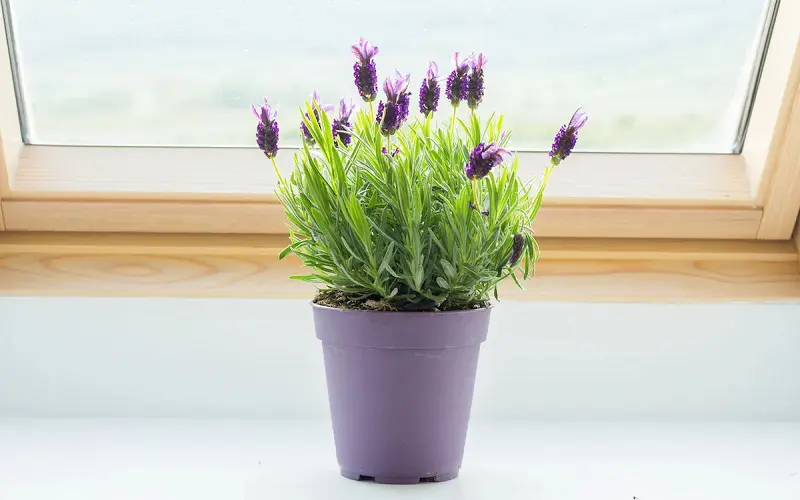
Carlos Amarillo/Shutterstock
Varieties of lavender are native to the Mediterranean region. Though they are somewhat different from each other, types of lavender have some commonalities. The leaves are narrow and thick, set in contrast by tiny purple flowers.
Lavender gets used in savory dishes via herbes de Provence or desserts. In addition, this herb has numerous non-culinary uses, including lotions, soaps, and moth deterrents.
13. Lemon Balm
Lemon balm, a perennial herb, provides a lemon-like flavor to teas, ice cream, and fish.
This herb is also a great addition to any pollinator garden, thanks to its ability to attract bees and other pollinators. Historically, lemon balm was also used to improve digestion.
14. Lemon Grass
Lemon grass varieties come from Africa, Asia, and Australia. The oils from this herb are used in soaps, insect repellents, and as an ingredient in East Asian cuisine. Lemon grass is also an essential ingredient in Hoodoo.
15. Lemon Verbena
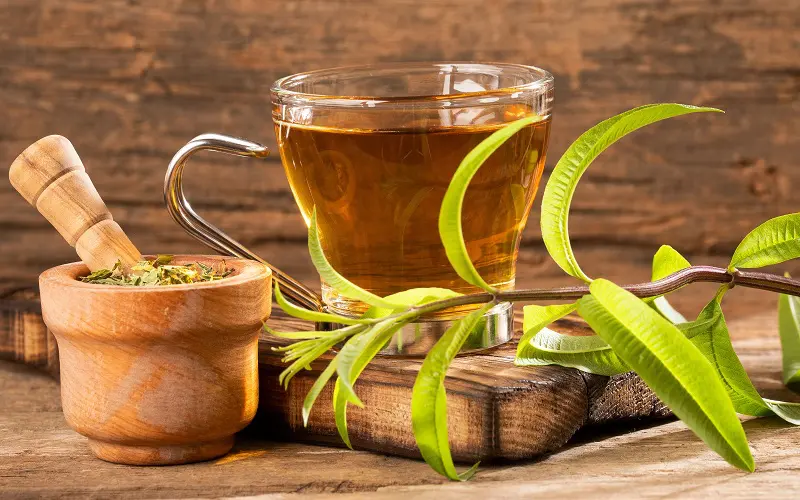
Lemon verbena, a plant native to South America, is a perennial herb that smells and tastes strongly of lemon. This ingredient plays a role in fish dishes, desserts, and beverages.
16. Lovage
Many parts of the lovage plant are useful in cooking the cuisines of southern Europe. The large plant can grow between six and eight feet tall. Leaves are broad and green, with pointed edges, and are useful in salads, soups, and seasonings.
Roots are delightful when cooked, and seeds function similarly to fennel seeds. In many ways, this plant tastes similar to celery or parsnips.
17. Marjoram
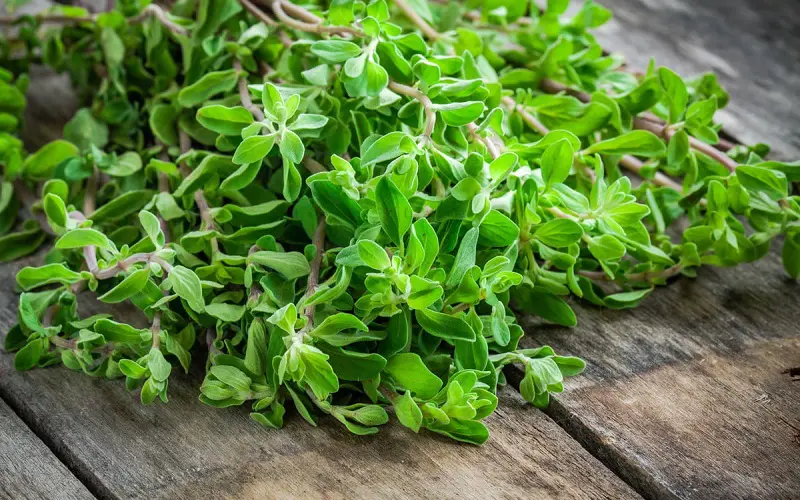
nblx/Shutterstock
Marjoram, frequently equated with oregano, has a citrusy pine flavor. It comes from the Mediterranean and the Arabian Peninsula.
This plant has a history in Celtic pagan culture as an integral tool in Samhain rituals. The herb is useful in soups, sauces, and teas. It also has uses in many medicinal applications.
18. Mint
Many mint varieties make up a genus of plants in the Lamiaceae family. Several other herbs, such as sage, rosemary, and oregano, are closely related to mint.
Most varieties of mint are very good at spreading, making them somewhat invasive in certain areas. Fresh and dried mint leaves play a culinary role in Middle Eastern, Indian, British, and Japanese cuisines.
19. Oregano
Oregano is an herb in the mint family popular in Italian cuisine. This woody perennial produces tiny purple flowers and little grayish-green leaves.
It is popular in cuisines throughout Italy, Greece, Spain, France, and Turkey. Subspecies and closely related species may also be used as oregano but have slightly different tastes.
20. Parsley
Parsley is a popular herb native to the Mediterranean and Northern Africa. This annual or biennial plant is not one of the hardiest herbs you can grow.
A few common varieties are used in cuisines from these and other regions. Cuisines use the leaves and seeds of this herb, while the leaves may be chopped and added to dishes. However, it is often a common garnish.
21. Rosemary
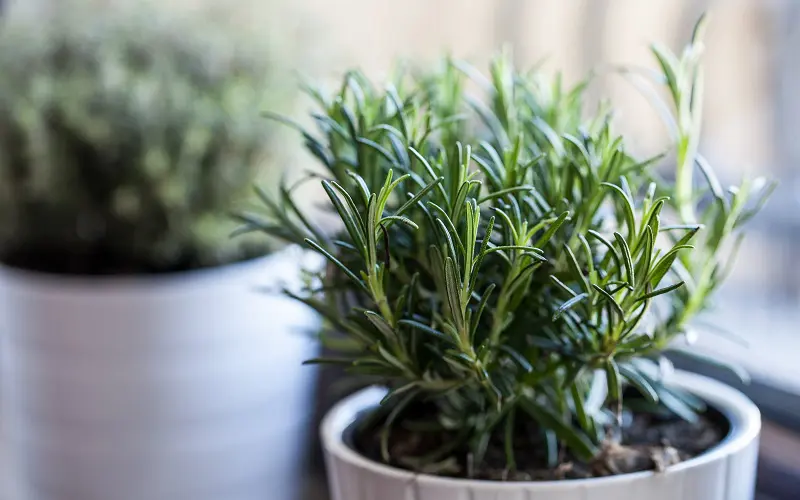
Antigoni Lekka/Shutterstock
This Mediterranean perennial shrub is recognizable thanks to its thin yet hardy evergreen leaves. It is closely related to sage plants.
Thanks to its hardiness, this plant is often used in ornamentation. The dried and fresh leaves are also popular in cooking. It had a big role in ancient cultures but currently plays a large role in modern Europe and Australia.
22. Rue
Rue is an herb valued for its culinary, aesthetic, and medicinal uses. You can recognize this plant from its lacy, round leaves and small yellow flowers.
Ethiopian, Greek, and Slovenian cuisines commonly use this herb. The seed, leaves, and stalk can all play a role. However, this herb is not used as frequently as it used to be.
23. Sage
Sage is a hardy perennial herb with a long culinary and medicinal history in many cultures. While there are many types of sage around the world, they share similar grayish-green leaves and purple flowers. The flavor of this herb is savory and slightly sweet, and it can be somewhat peppery.
24. Sorrel
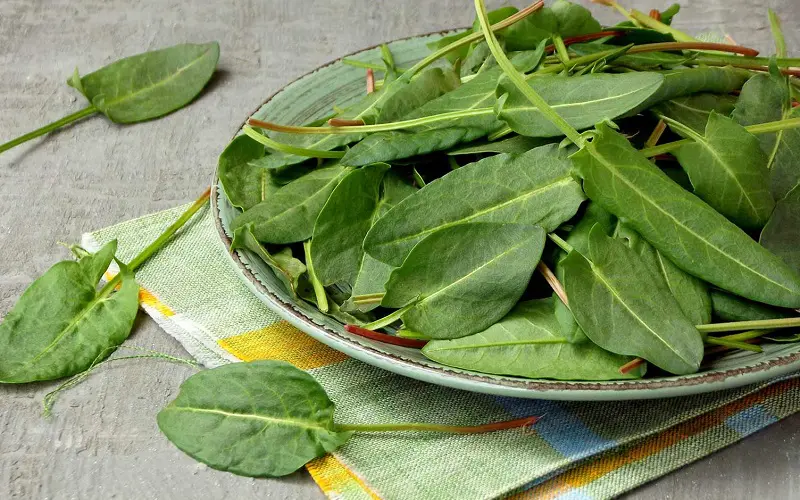
Oksana_Slepko/Shutterstock
Caribbean, Eastern European, and Middle-Eastern cuisines often use sorrel. This herb grows as a perennial and finds use as both an herb and a leafy vegetable.
Since the leaves of this plant can become tough over time, younger leaves are preferred for culinary applications. They can work well in sauces, soups, and salads.
25. Tarragon
Tarragon grows naturally throughout Europe, Asia, and North America thanks to its rhizomatous roots. There are several subspecies of tarragon used in culinary and medicinal ways.
Tarragon plays a role in cuisines including Georgian, Armenian, Ukrainian, French, and Slovenian.
26. Thyme
Thyme is a group of perennial evergreen herbs related to mint and oregano. Along with those herbs, it has many medicinal and culinary purposes. They are particularly popular in Italian, French, and other European cuisines.
Things to Consider
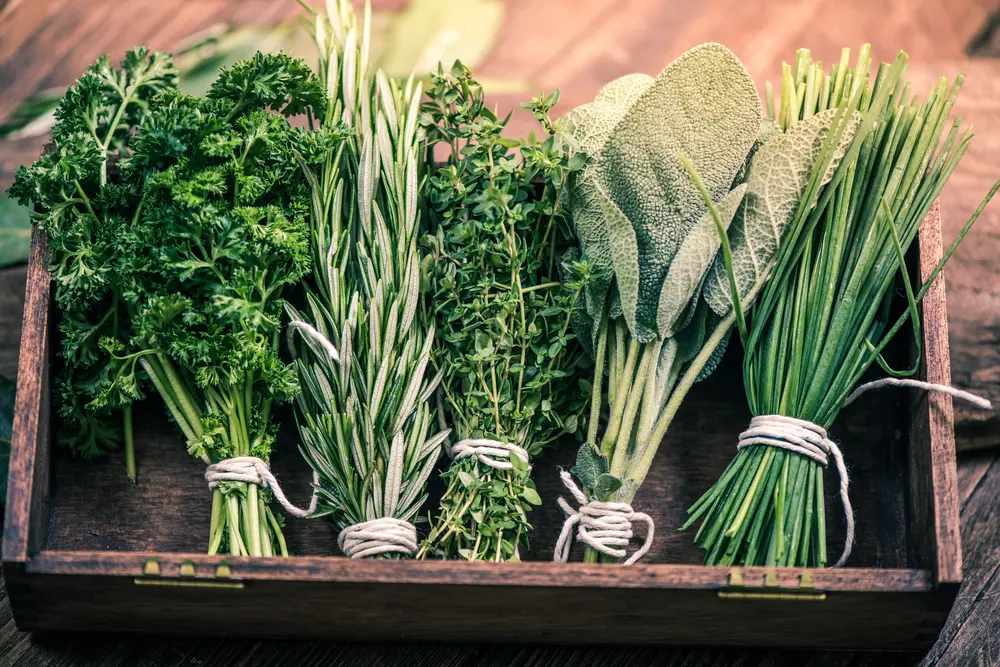
Marcin Jucha/Shutterstock
Here are a few general things to consider if you want to grow herbs or use them at home.
- Some herbs are easier to grow than others. If you are new to herb gardening, consider hardy perennials such as thyme, rosemary, and sage.
- Many herbs grow well indoors as long as they have access to sun and water.
- You can dry hardy herbs easily at home in a well-ventilated area away from the sun.
- When buying herbs, look for robust leaves and stems.
- You can combine herbs into different mixtures. For example, the herbes de Provence include savory rosemary, sage, marjoram, oregano, and sometimes lavender.
Frequently Asked Questions
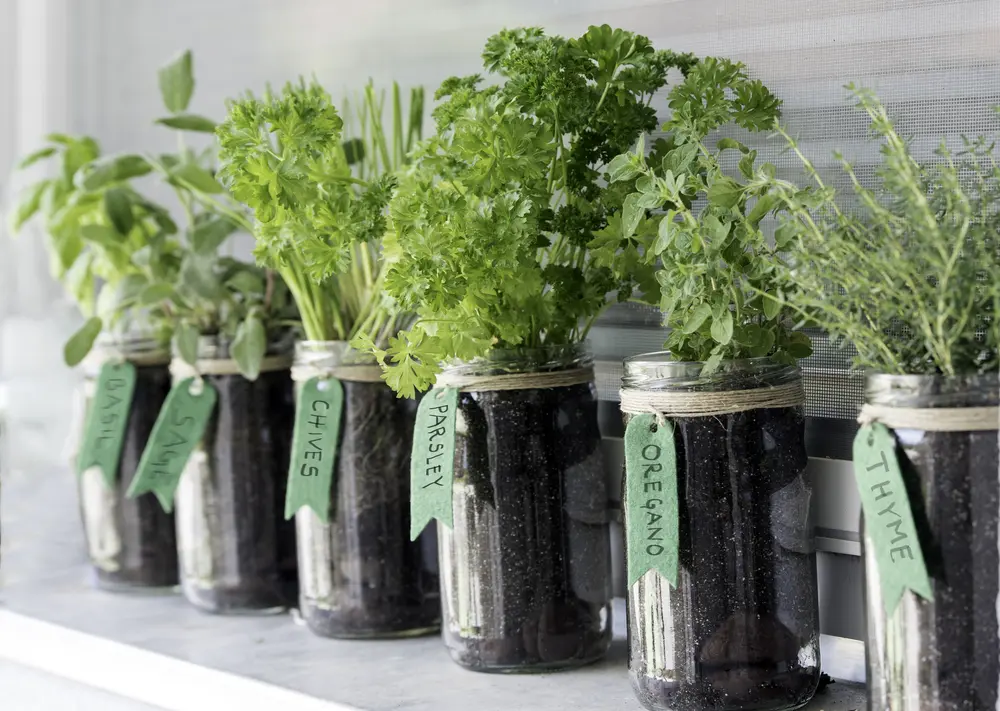
Ktkusmtku/Shutterstock
Here are a few commonly asked questions regarding the most common types of herbs:
How many types of herbs are there?
The National Library of Medicine lists between 75 and 100 herbs and flowers in its database. That number can vary because so many herbs have different variations.
What are the ten most used herbs?
The ten most used herbs can vary based on the culture using them. For example, many European gardens include basil, chives, cilantro, dill, mint, oregano, parsley, rosemary, sage, and thyme. Alternatively, many Indian gardens include tulsi, aloe vera, marigold, parsley, sage, calendula, fenugreek, ashwagandha, khus, and stevia.
Which herb is easiest to grow?
Some herbs will grow more easily in some environments than others. However, there are a few that do well in most conditions. If you struggle with growing herbs, a few hardy options include sage, thyme, oregano, basil, dill, parsley, and chives.
Is garlic an herb?
While garlic is often used similarly to aromatic herbs, it is not itself an herb. Instead, it is an aromatic vegetable.
What health properties do herbs provide?
Herbs serve medicinal as well as culinary purposes in many cultures. Many herbs have antioxidant, anti-inflammatory, anticarcinogenic, and mood-boosting properties. Some herbs that show these and other properties are rosemary, sage, oregano, and fenugreek.
So, What Types of Herbs Should You Have at Home?
Do not underestimate the power of a few smelly leaves. The herbs on this list can add flavor to many different elements of your life.
Elevating your cooking and senses is as easy as adding a pinch of rosemary or a dash of lemon verbena. Happy planting!

